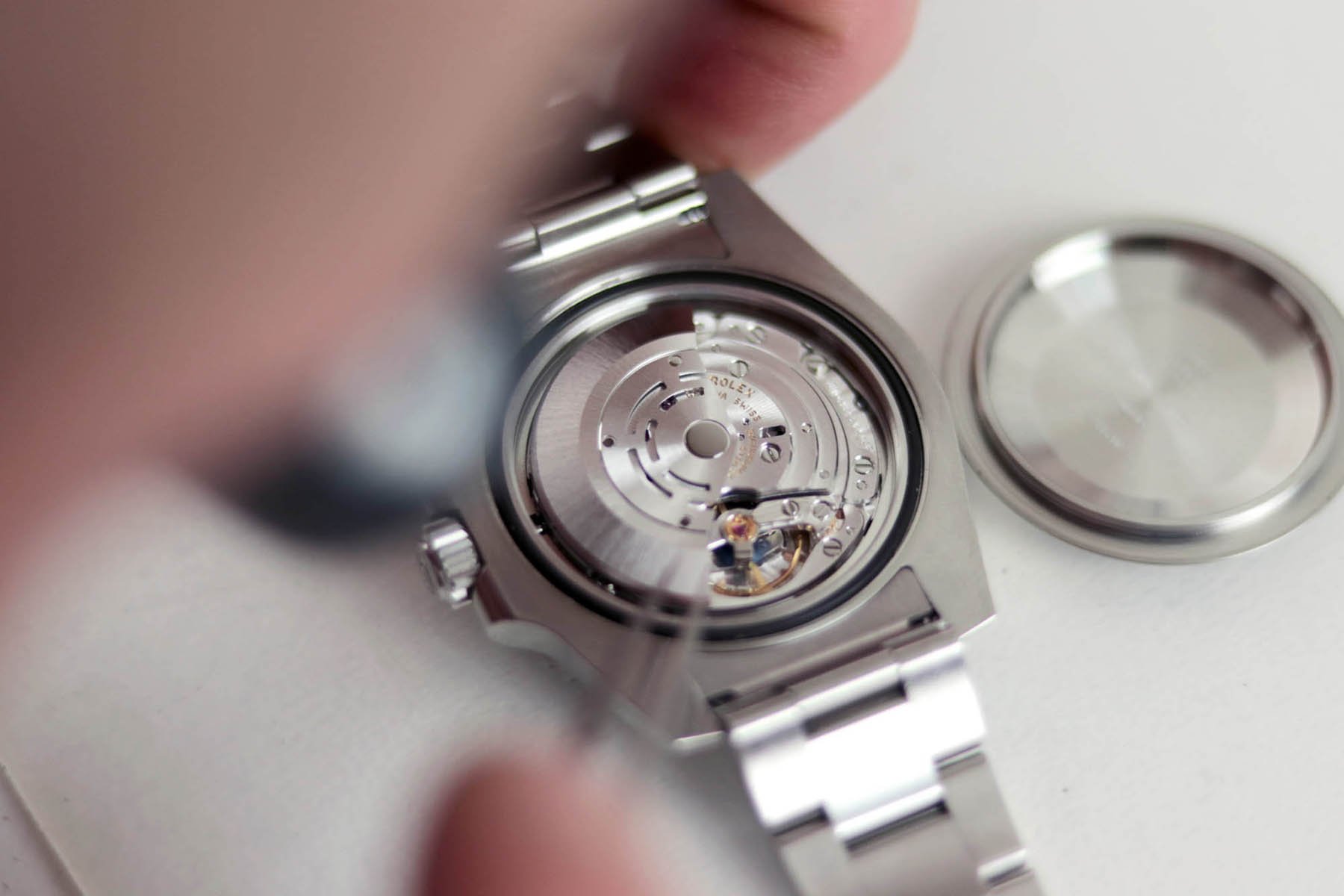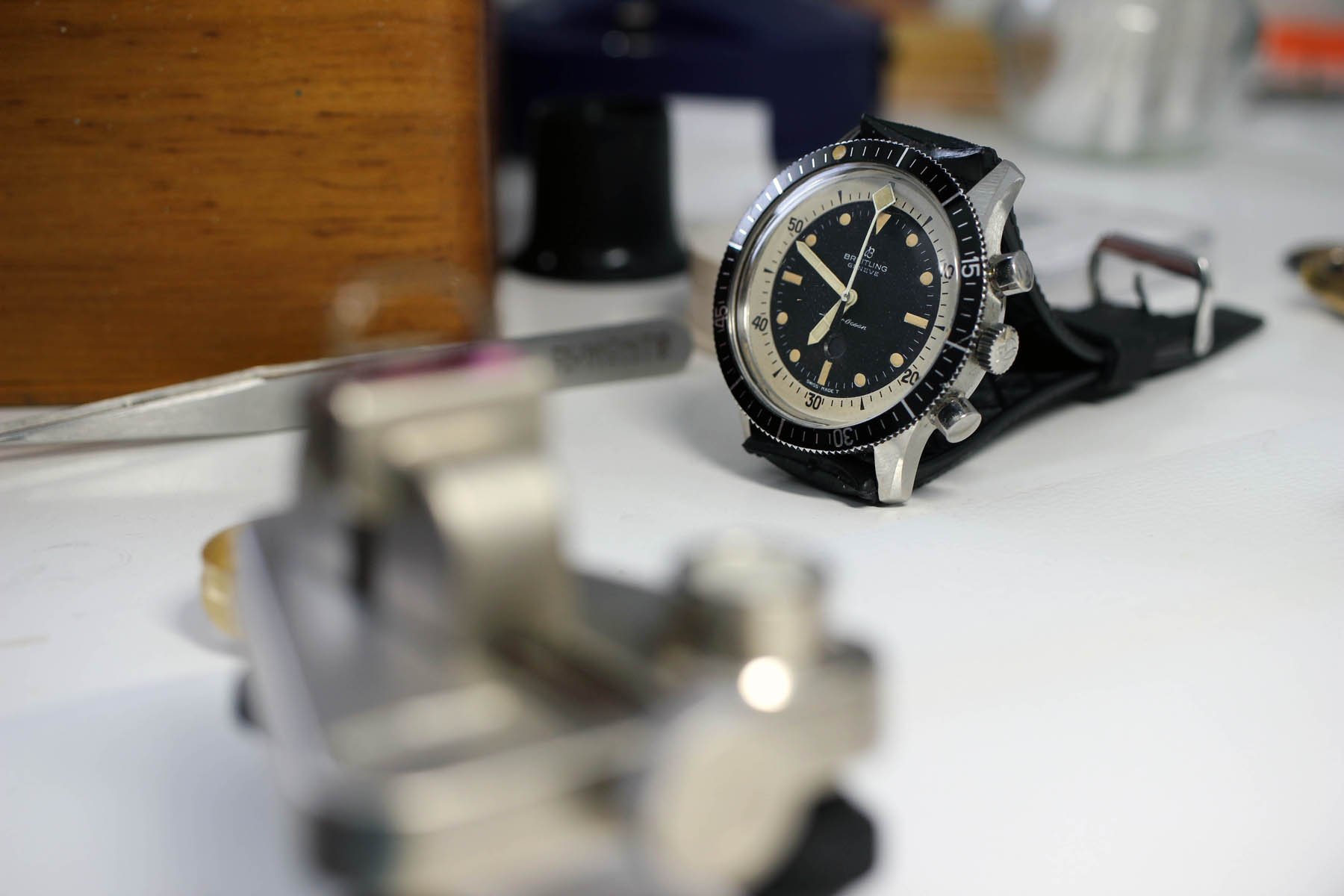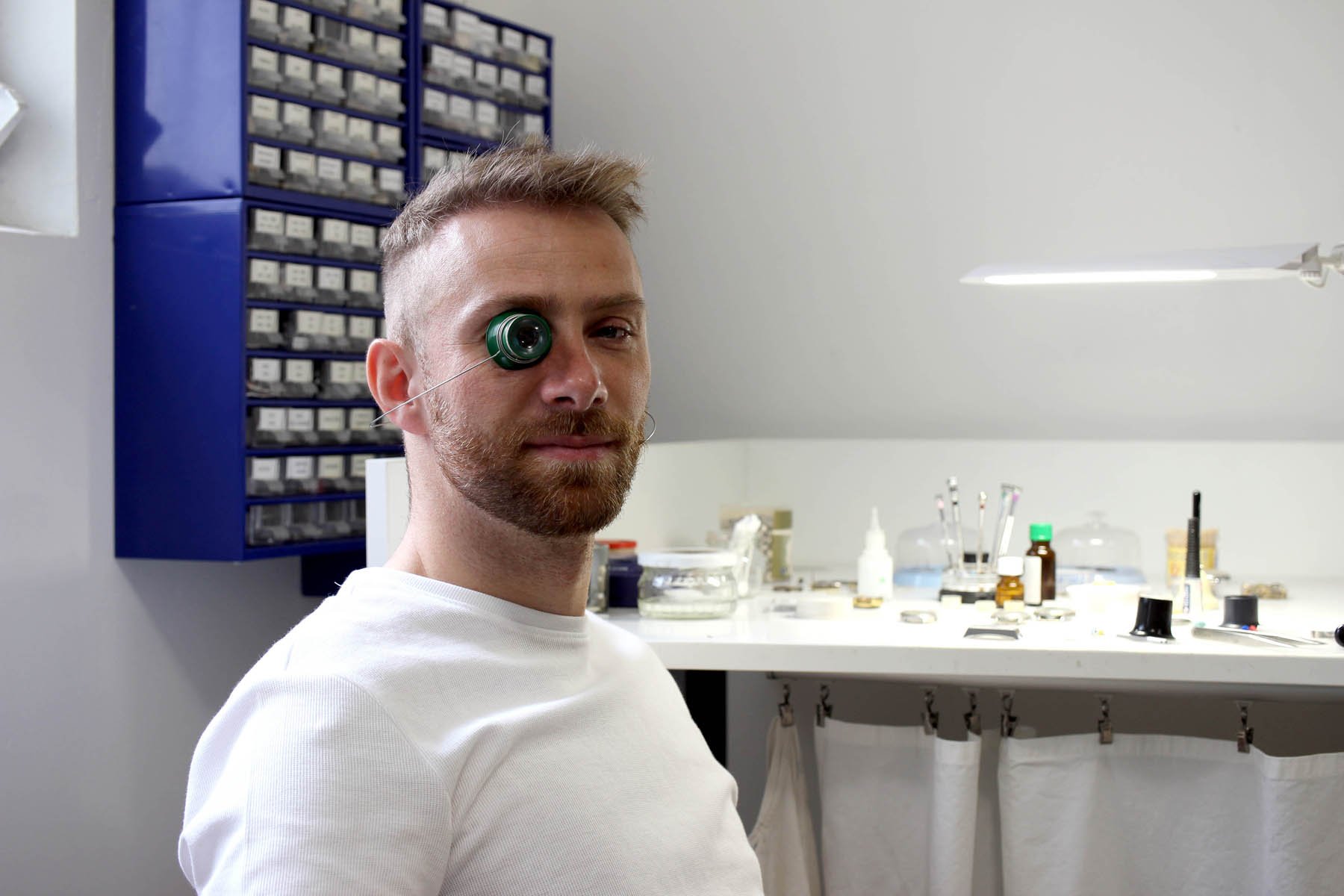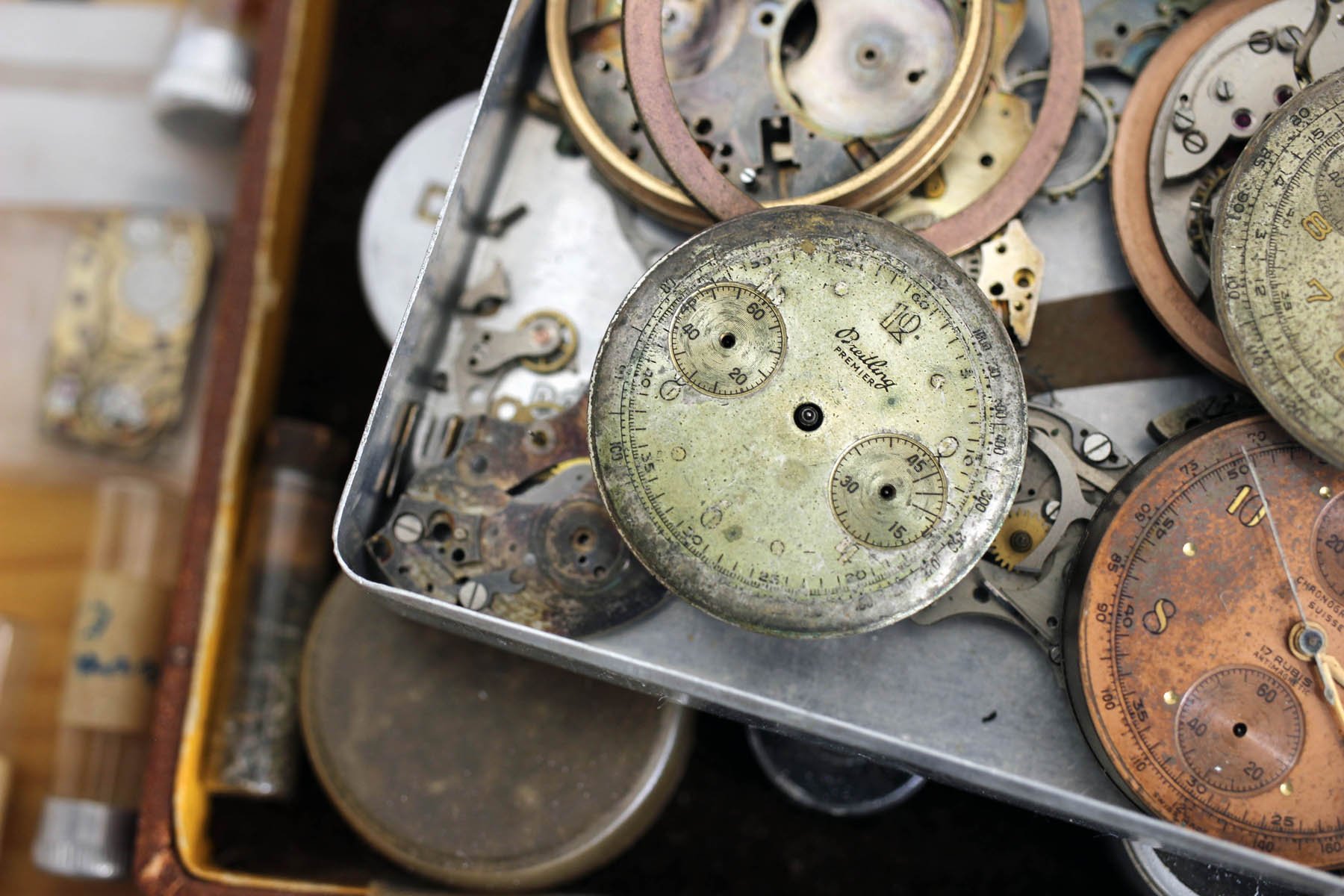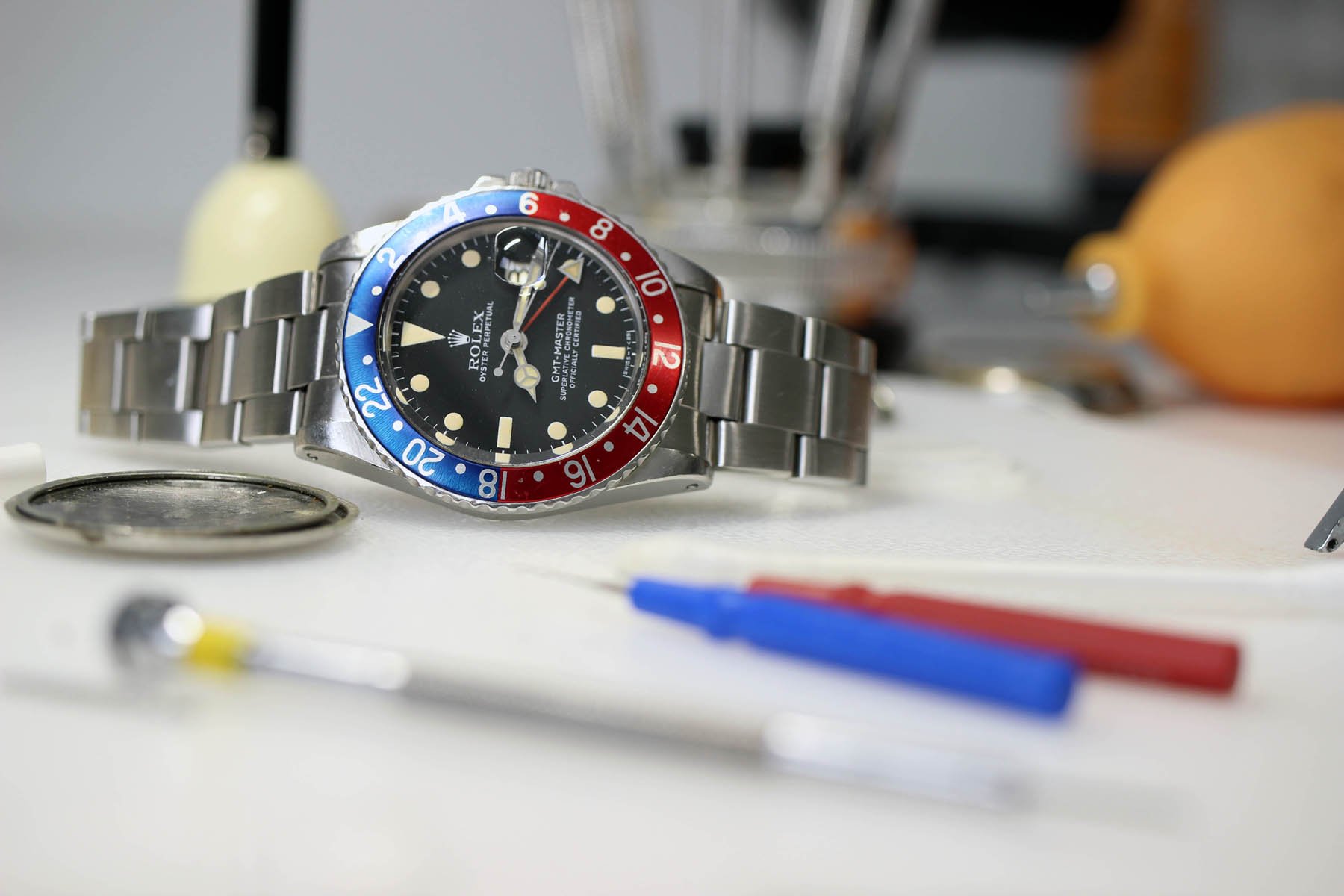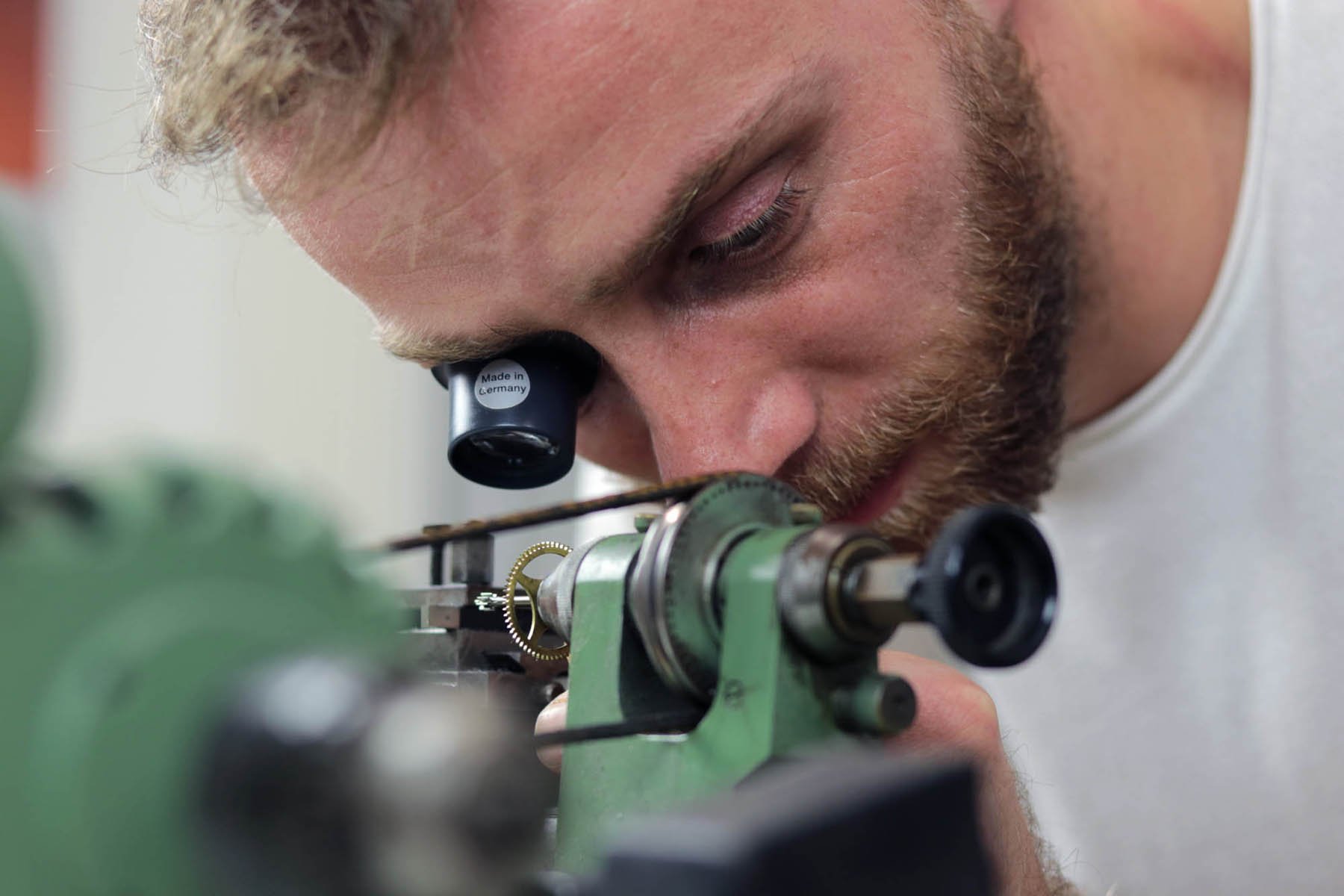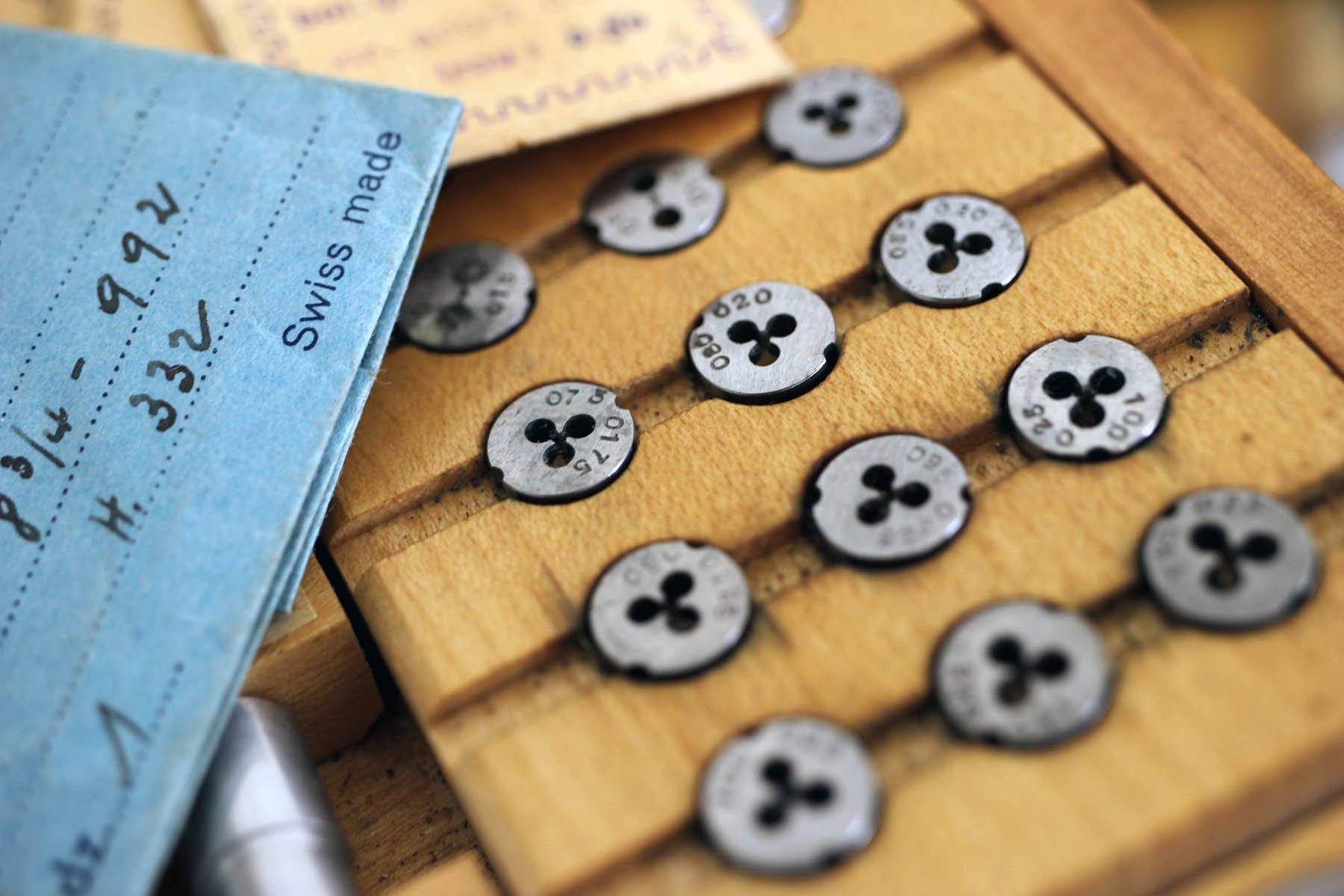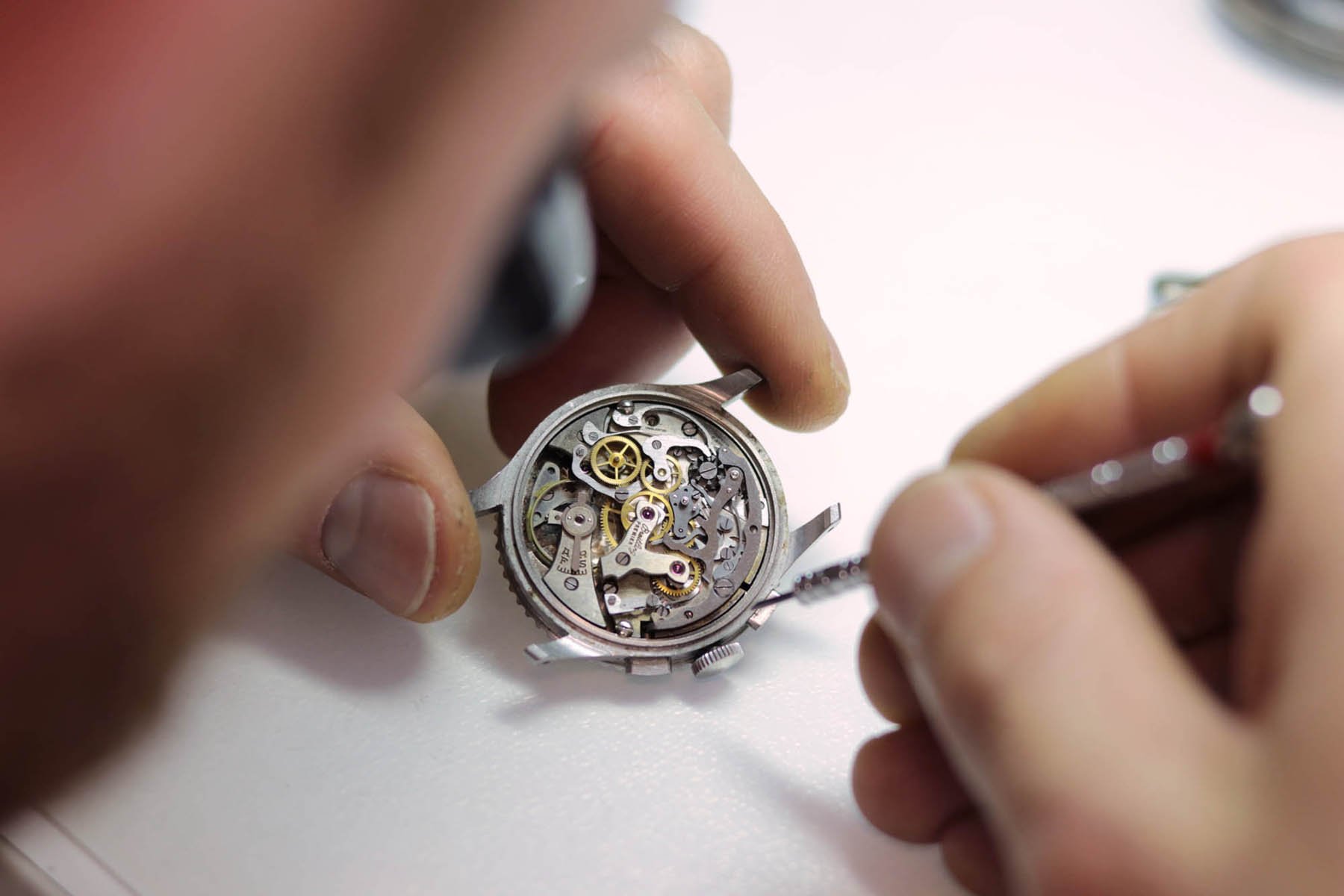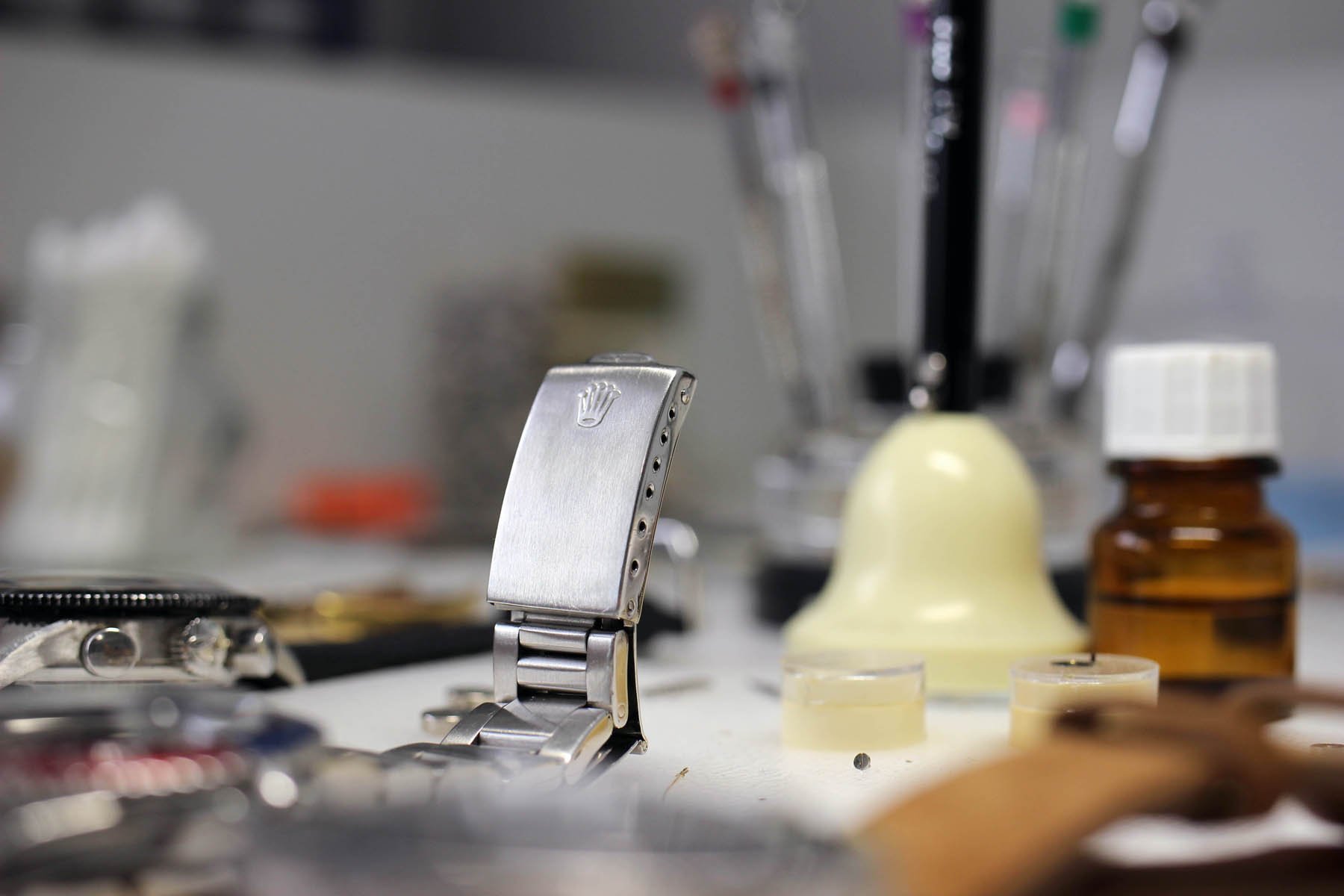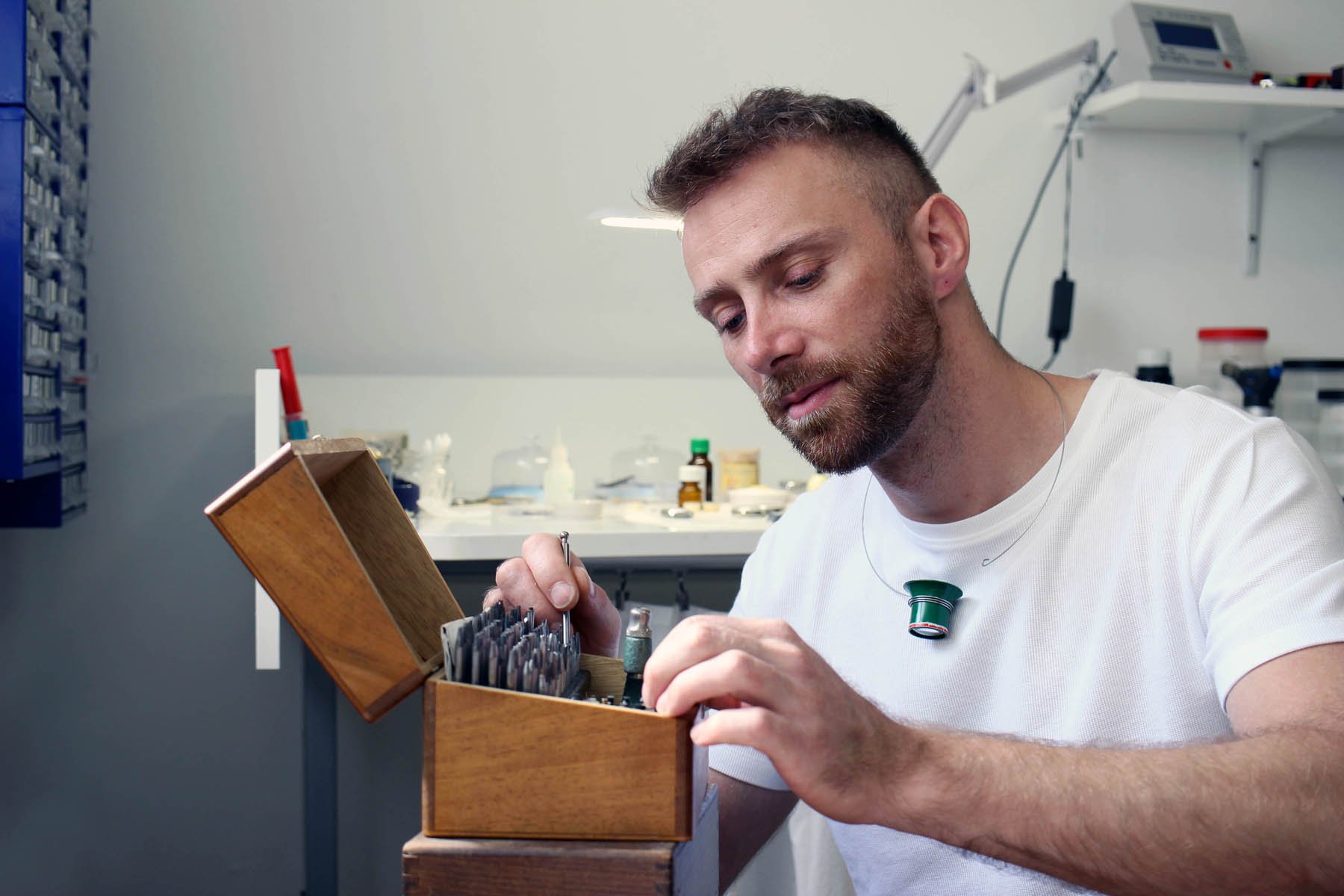Why Don’t Some Watchmakers Like To Service Vintage Watches?
A good, reliable watchmaker with reasonable rates who is willing to accept any vintage watches you bring to their workbench is a rare specimen. I dare say I value my watchmaker more than any of my highly regarded watch dealers.
If there is a question I get as often as, “Where did you get that watch?”, it would be, “Where did you get that watch serviced?“ Servicing vintage watches is not only a delicate task but also a delicate topic. When I say delicate task, I think of all the painfully butchered watch cases that collect more scars from one visit at an incompetent watchmaker than after five decades of wrist time. I’m not whining about one unfortunate slip of a screwdriver that happens from time to time, but rather about ignorants that leave screw-heads heavily wounded or chipped hand paint.
…I always ask for movement shots…
And I am not only speaking about relatively cheap watches. Not long ago, many of today’s big-budget watches held the status of the most ordinary tool, hence they often ended-up at some local workshop. I don’t want to disgrace anybody’s work, but it happened many times that they became victims of experimental servicing due to lack of experience or respect. When I buy a used watch, regardless of whether it’s modern or vintage, I always ask for movement shots for closer inspection.
Looking for a good watchmaker
When I said that servicing watches is a delicate topic, I thought of all the tormented sighs I got from other fellow collectors. Two years ago I asked a Vienna-based collector about maintaining his fine collection of vintage Breitlings. “I have my watches service by watchmakers in the US mainly, but none of them accept new clients. Richard Askham in the UK is good and reliable, but nobody in Vienna.“
This sentence sums up how difficult it is to find a reliable watchmaker. Unfathomably, it is a global issue. The best ones have their existing clientele that provides so much work that they don’t need to look for new customers. Some watchmakers specialize in certain brands. Special relationships built between brand and watchmaker can often afford them access to a lot of donor watches or replacement parts.
My watchmaker
This week, I went to see my watchmaker Tomas Sinal to ask him about servicing vintage watches. It’s often tricky work. If you remember my article about Eberhard Contodat, it required three visits before it was perfect. Sometimes there is no other way to check the correction than to put the whole movement together. “Vintage watch servicing brings with it the risk that a lot of the time you spend over the watch is unpaid in the end,“ Tomas explains. “Servicing modern watches has a higher success rate. And that goes beyond the simple availability of replacement parts.“
A minefield
Servicing vintage watches increases the likelihood that you’ll run into a watch that has been poorly serviced in the past. That multiplies the effort needed to get the watch back into perfect shape. “If the service requires sourcing some parts of the damaged case, special crystals, crowns, or pushers, the overall service time stretches to months. And, like many other watchmakers, I don’t like to keep many projects open at the same time,“ Tomas explains. Not every customer is able to source parts on their own. And which watchmaker wants to be that online nerd hunting down some long-forgotten broken canon pinion? Time spent on that is often complicated to charge. Well, it’s not as complicated to put it on the bill as it is for the customer to understand it.
Vintage means passion
Servicing vintage watches is a really tough business. To accrue a decent-sized stock of replacement parts can take years. It requires a special kind of dedication. Some would say obsession…
“My job is my hobby, but it pays the bills too. That’s why I gladly service modern watches. It’s clean and with fewer surprises. But at the same time, nothing can outmatch the pleasure if I find a nearly hundred-year-old timepiece on my bench that hasn’t been ruined by unprofessional hands. That feeling after servicing old iconic calibers is just unspeakable.“
Servicing vintage watches is a long-run decision.
I guess there are watchmakers dreaming of servicing legendary movements only on iconic watches and for big money. The problem is that to get to such a position is not easy. The only way to get there for younger watchmakers is to basically sacrifice short-term quick earnings from servicing modern watches and invest more time into servicing vintage watches. Servicing vintage watches is a long-run decision. And given the current scarcity of watchmakers, quite a challenging one. But let’s hope the growing community of vintage watch collectors will help create the necessary demand.
Building trust
The other side of the coin is the opportunity for watchmakers to build trust in servicing expensive watches with unique calibers. Many of you know well how many years it takes to land a special reference, so doing the math on how many of them have already crossed the hands of your local watchmaker is easy. I leave pretty much everything with my watchmaker, even though I know he has never serviced such a caliber. I have been observing and admiring his work for years and I know how he treats watches. It all happened quite organically as I literally pushed myself into his studio and spent a few weekends there watching him work on my watches.
…watches are our common ground.
If you know my collection a bit, you might roughy know what passes over his bench. I knew that in order to pursue my dream I needed to find a reliable watchmaker, so I kept bringing him more and more watches. Besides horologically boring watches, I gave him the opportunity to meet some fine calibers that he’d hardly have access to. Ultimately, we became good friends, and watches are our common ground.
Tools older than watches
Every time I walk into his studio, I am fascinated by the variety of tools I see around. “One of the oldest and the most indispensable is the precision milling machine. I am really lucky that I managed to collect a few tools that are hard to buy today,“ Tomas shows me some of his gadgetry. The most valuable machines he has were given to him by old watchmakers, mentors from his early years of being a watchmaker. The fact that these machines have personal stories before they became part of his inventory adds to their charm.
I was particularly enchanted when I first saw Tomas handling the manual pantograph. It’s a very simple-but-special tool that looks like a poppy mill. Tomas has plexiglass sheets of different thicknesses. He attaches one piece of plexiglass to the turning plate and, by turning it, the sharp knife at the other end cuts the desired diameter.
How long does it take?
It’s not easy to say, what the average duration of a vintage watch service is. It always depends on the scale of work that needs to be done. If we’re talking about a basic full overhaul, Tomas estimates it at around three hours. The ugliest job he can think of is to service rusty movements. Servicing rare historic caliber makes him shine. “The longest service I remember took me four days. I worked ten hours straight every day. It was a gold pocket watch with a minute repeater and moving figures of three angels striking bells with small hammers.“
…an original story with an original solution.
Tomas often says that, “Each vintage watch service is an original story with an original solution.“ He estimates that he can immediately proceed with around 50% of service inquires coming in, without being slowed down by sitting online and sourcing parts.
#TBT photobombing
Since I’ve joined Fratello, I asked Tomas multiple times to disassemble a watch I was just writing about on #TBT. This way you could see the mechanics behind the 24-hour Gruen Airflight, flashing seconds Mondia or early automatic Wyler Crichettino. At any given time, I have a couple of watches waiting for his magic touch. When I bring in any recent acquisition begging for service, we open the watch together and find the problem. I often leave with a broken part in my bag.
Sourcing parts
I prefer to source missing parts myself, as I know watchmakers don’t like doing that. You should do that too. Your watchmaker will be much happier and you’ll also have an amazing opportunity to prove you are truly interested in understanding your watch and its movement. A truly passionate watchmaker will gladly explain the problem to you. For you, it’s an opportunity to stick out from the crowd and make him remember you. It could be the start of a lifelong friendship.
Years of learning
But sourcing some parts is sometimes impossible. This is where the really good watchmakers separate themselves from the pack. In the absence of replacement components, some parts need to be made by hand.
“Throughout the years I mastered many tricks, some easy and some more complicated to explain to watch novices. Back in the day, I was always sourcing new balance staffs. Broken balance staff pivots are a common problem in old watches.
“When I was not able to find the necessary part, I learned how to fix them. I have to drill off the broken pivots and put new ones in. There are plenty of delicate processes and techniques requiring high precision. You need to be perfectly relaxed and take your time. Even if something goes wrong at the last step, you have to be ready to repeat the process multiple times. This part might be annoying sometimes, but that’s real watchmaking. You can imagine that many watchmakers don’t like to go that far in the process.“
Money talks
I’ve known my watchmaker long enough to understand a bit of his “modus operandi”. I have seen many watches and the condition in which he receives them.
The unfortunate fact is that lower-end vintage watches need to be serviced just as much as watch stars. And I know paying a €200 service bill on a €200 budget watch is much more painful than paying the same amount on €2,000 watch, but sometimes it is necessary. Watchmakers know how their customers think and I understand that many of them might feel uncomfortable billing 100% of the watch value service. Unfortunately, that’s sometimes the reality.
…start looking for the watchmaker of your dreams…
Not to mention other problems that might occur during the service prolonging the overall service time. Servicing modern watches is more straight-forward, safer, and less complicated. Having said that, I don‘t need to know where are you from, but I can reassure you are sane if you still ship your watches for a cross-border service. Meanwhile, I recommend you start looking for the watchmaker of your dreams living next door — it will make building up a nice collection much easier.

